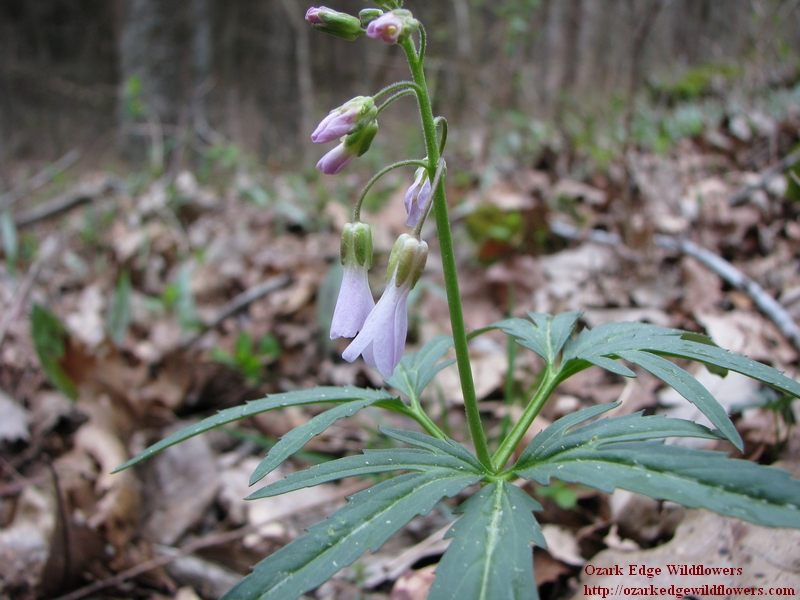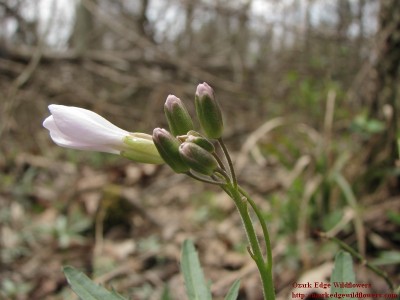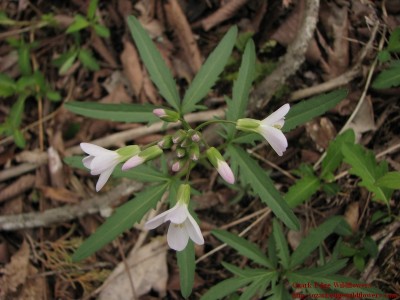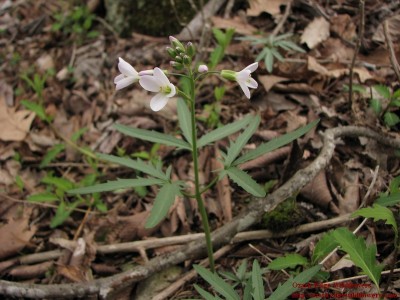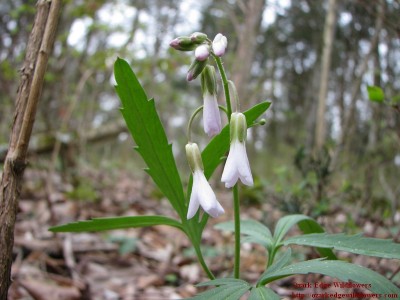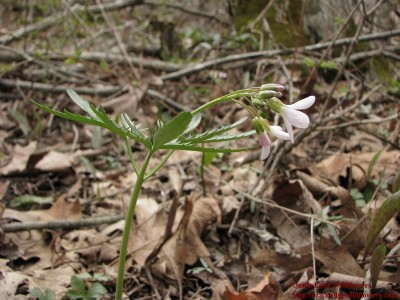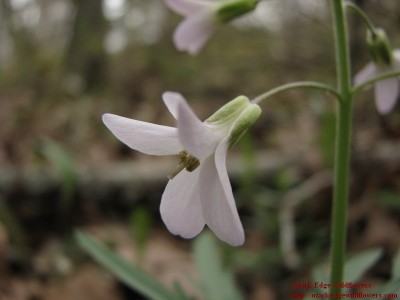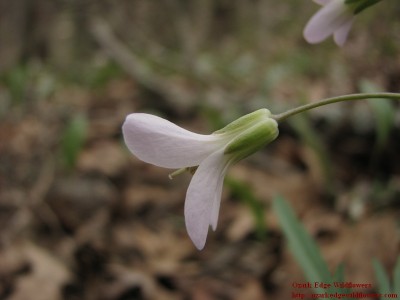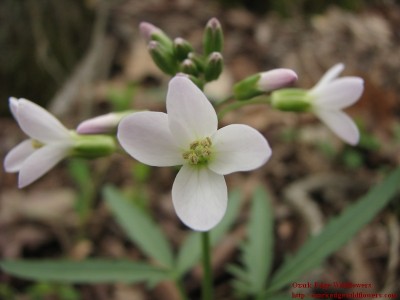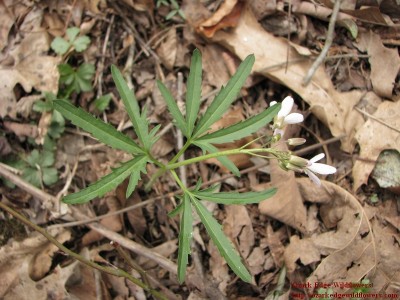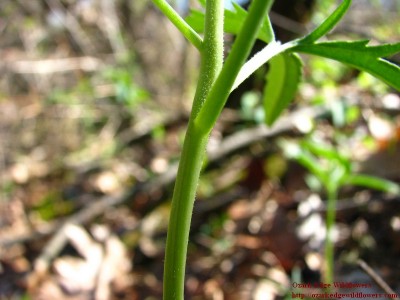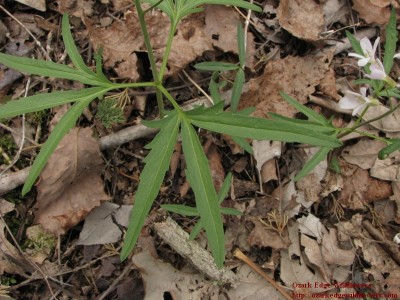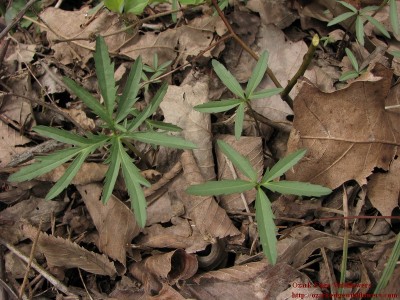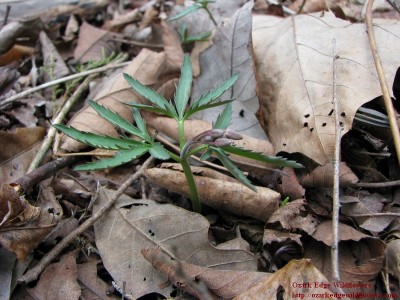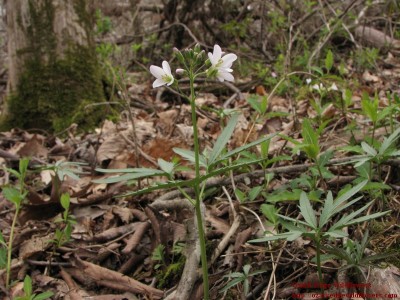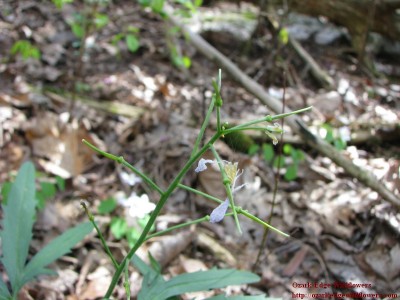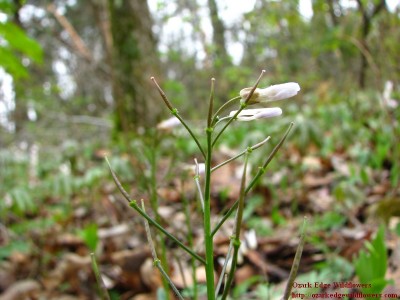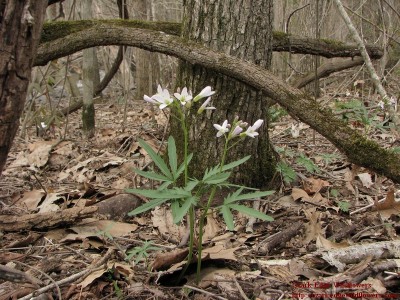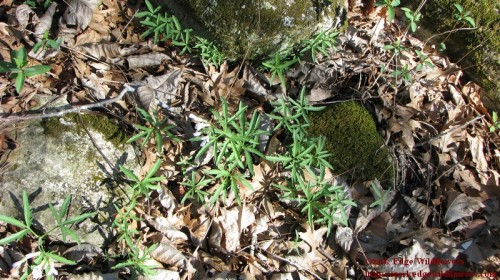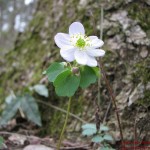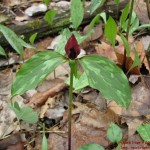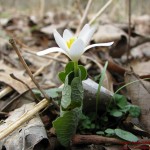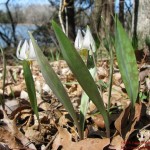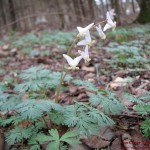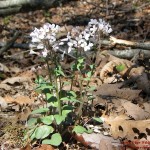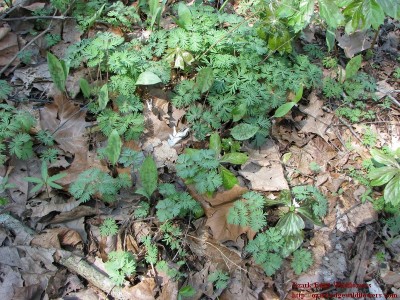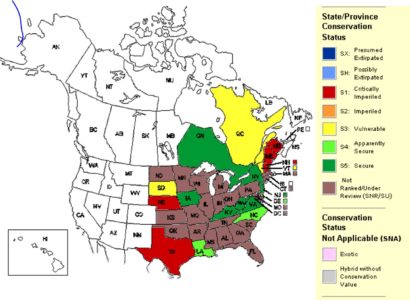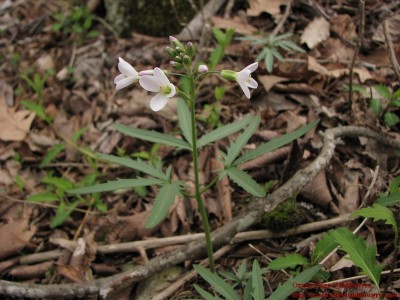I look forward to the blooms of Cardamine concatenata every spring. It’s one of the most unmistakable plants to identify for wildflower enthusiasts due its unusual leaves. Pretty and dainty—it is a welcome sign of spring.
Latin Name/Common Name- This species was formerly known as Dentaria laciniata. Cardamine is derived from the Greek word, “kardamon”, meaning cress. Concatenata is Latin for joined together, or concatenated, and refers to the segmented root. There are many common names. The one I am most familiar with is Cutleaf toothwort—referring to the highly dissected leaves and either the tooth-like shape of parts of the root or the historic use of the roots to ease the pain from a toothache. Other common names include Pepper root, Lady’s smocks, Crinkleroot, Milkmaids, Pepperwort, and Toothache root. The edible roots of the plant are said to have a pungent taste, leading to the common names Pepper root and Pepperwort.
Bloom Color- The delicate blooms of Cutleaf toothwort start as pale pink buds which open to reveal flowers of soft white with pink undertones.
The buds of Cutleaf toothwort have a soft pink blush
Soft white blossoms open from the pink buds
Description- Although it only grows to a height of 8 to 16 inches, this charming spring ephemeral still manages to catch your eye with its distinctive leaves and soft white flowers. Cardamine concatenata has 3 leaves arising in a whorl from the smooth stem. Each leaf is deeply dissected into 3 or more toothed lobes.
Noding flowers and toothed leaf
Single stem with 3 leaves
Each flower consists of 4 petals with 6 stamens and erect style
Whorled leaves of 3 viewed from above
Smooth stem is glabrous, becoming slightly pubescent in upper portion
Leaves are highly dissected and toothed
Immature plants having only 1 leaf will not bloom
Bloom Time- On Ozarkedge, Cardamine concatenata is a March blooming ephmeral. Depending on winters fury, it may flower a bit late and extend into April. This plant requires patience. It has taken me years to obtain the pictures I needed, and still, I’m not satisfied. The blooming is fleet, even compared to other spring ephemerals. Miss a couple of weekend hikes and the opportunity is lost for the season. Inclement weather during your free weekend in March? Too bad, wait for next year. Although she plays hard to get, Cardamine concatenata is worth waiting for. The plant is distinctive with its interesting foliage and pretty, nodding flowers. It is a harbinger of spring, being one of the first flowers of the season.
Cardamine concatenata buds in mid March
Erect seedpods are long and thin. Initially green, they ripen to brown in late spring
Habitat- Mesic woodlands are the preferred habitat for Cardamine concatenata.
Cardamine concatenata in preferred habitat of sloped, mesic woods
Early growth of Cardamine concatenata in rocky woods on Ozarkedge
What’s Growing Nearby?- There are many beautiful spring ephemerals growing together in the mesic woods of Ozarkedge. Purple trillium (Trillium recurvatum), Bloodroot (Sanguinaria canadensis), Rue anemone (Thalictrum thalictroides), Dogtooth violet (Erythronium albdium), Dutchman’s breeches (Dicentral cucullaria), and Cardamine douglassi are a few of my favorites that can be found blooming alongside Cardamine concatenata.
Thalictrum thalictroides Trillium recurvatum Sanguinaria canadensis
Erythronium albidum Dicentra cucullaria Cardamine douglassi
Endangered List- Cardamine concatenata native habitat includes the entire east coast of the United States. It is on the endangered list in both Maine and New Hampshire. http://plants.usda.gov/java/profile?symbol=CACO26
You can see the status of this lovely plant on Natureserve here. It is considered vulnerable in Quebec and South Dakota and critically imperiled in Maine, Nebraska, Texas and New Brunswick. It is apparently secure in North Carolina and Louisiana and secure in Iowa, Kentucky, Virginia, West Virginia, New York, New Jersey and Ontario.
*NatureServe. 2018. NatureServe Explorer: An online encyclopedia of life [web application]. Version 7.1. NatureServe, Arlington, Virginia. Available http://explorer.natureserve.org. (Accessed: February 15, 2019 ).
Interesting Tidbits- The Falcate Orangetip (Anthocharis midea) butterfly uses Cardamine concatenata as one of its host plants. You can learn more about this interesting butterfly and see other host plants here– http://en.wikipedia.org/wiki/Falcate_Orangetip.
